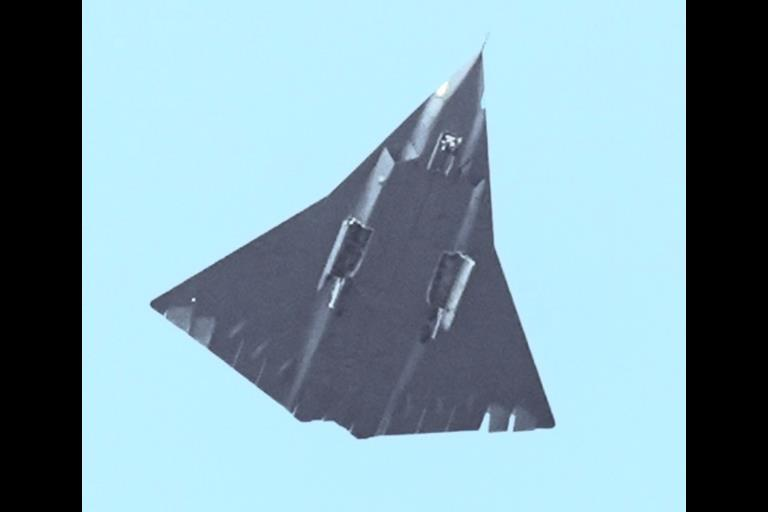China has once again showcased its growing aerospace prowess with the unveiling of two new stealth aircraft prototypes. The debut, which coincided with the birthday of former leader Mao Zedong on December 26, highlights the nation’s relentless pursuit of cutting-edge military technology. This landmark event underscores China’s ambition to establish itself as a dominant force in next-generation airpower.
China’s New Stealth Fighter Designs
China’s latest stealth prototypes, developed by its premier aerospace corporations, represent a bold step toward next-generation aerial warfare technology.

- The Larger Prototype: A tri-engine tailless delta-wing aircraft was spotted over Chengdu, escorted by China’s 5th generation stealth fighter Chengdu J-20S Mighty Dragon. Developed by Chengdu Aerospace Corporation, this aircraft features advanced stealth capabilities, long-range potential, and an unconventional design that could position it as a sixth-generation contender.
- The Smaller Prototype: A single-engine aircraft, accompanied by a Shenyang J-16, was seen flying near Shenyang. Created by Shenyang Aircraft Corporation, this prototype emphasizes agility and stealth, with speculation that it might operate as an unmanned platform or multi-role fighter.
Both designs incorporate tailless configurations to reduce radar signatures, a hallmark of advanced stealth technology. However, this approach requires intricate flight control systems to ensure stability and performance.
Evolution from the J-20 Mighty Dragon
The Chengdu J-20, China’s first 5th-generation stealth fighter, laid the foundation for these developments. Introduced in 2017, the J-20 now serves as a cornerstone of the People’s Liberation Army Air Force (PLAAF) with an estimated fleet of 250 aircraft.

These new prototypes expand on the J-20’s design, signaling China’s intent to explore diverse roles and capabilities. The larger prototype, with its unique tri-engine configuration, hints at long-range missions and higher speeds, while the smaller model suggests potential unmanned or highly versatile applications.
Revealing these advanced aircraft on Mao Zedong’s birthday is deeply symbolic. Mao’s vision of self-reliance and technological progress continues to influence China’s defense strategy. This showcase underscores how far China has come in realizing Mao’s aspirations of military and industrial strength.
Possible Global Power Shift of China’s Stealth Fighters?
The debut of these aircraft sends a clear message to the international community. Their advanced stealth capabilities and potential as multi-role or bomber aircraft represent a significant challenge to the dominance of Western airpower, particularly that of the United States.
If fully developed and deployed, these prototypes could redefine aerial combat dynamics, offering China a strategic advantage in contested regions like the Indo-Pacific. Their stealthy designs and operational versatility make them formidable additions to China’s growing military arsenal.
The Future of Chinese Air Superiority
While many details about these stealth fighters remain classified, their unveiling highlights China’s commitment to innovation in military aviation. These developments showcase the country’s determination not only to compete with global powers but to lead the charge in shaping the future of air combat.
By introducing these prototypes, China has demonstrated its capability to innovate and adapt to modern warfare demands. As these aircraft evolve, they will undoubtedly play a critical role in China’s ambition to establish itself as a leader in advanced military technology.


